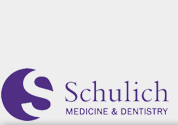Case Synopsis
Middlesex-London is experiencing an alarming rise of new HIV cases in people who inject drugs (PWID). Despite a demonstrably successful harm reduction program and primary care effort, the rapid increase in HIV remains. To help reduce the incidence of HIV in PWID, in association with Regional HIV/AIDS Connection (RHAC), My Sister’s Place, and the Middlesex-London Health Unit (MLHU), the Counterpoint Needle and Syringe Program in Middlesex-London distributed over three million needles in 2016. Nevertheless, healthcare workers continue to diagnose PWID with HIV and other infections. Of those needles distributed, only 1,895,798 were recovered through these organizations and, thus, improperly discarded needles have been spotted across the city on multiple occasions.
PWID in Middlesex-London face significant barriers when accessing care and support. Barriers, including, but not limited to, psychosocial (i.e., stigma, social support), structural (i.e., housing, treatment access, poverty), and institutional factors (i.e., patient-physician relationship), can hinder PWID from accessing adequate healthcare and support services. With an aim to address some of the barriers faced by PWID, the Middlesex-London Health Unit has established an HIV Leadership Team that works collaboratively with key system partners in the field of HIV treatment and support, substance use, and support for people who experience homelessness.
This case demonstrates the impact of social determinants of health such as poverty, homelessness, and inequalities in PWID’s health, well-being, morbidity and mortality patterns, as well as their access to care. This case also highlights the importance of recognizing the influence of social determinants of health in the planning, implementation, and evaluation processes of public health programs to ensure that interventions are effective, cost-effective, and equitable.
Case Objectives
- Explain the potential impacts of social inequalities on the health and well-being of PWID, the principles of harm reduction, the operation of needle exchange programs, and the needle recovery strategies. How does the position of a PWID in society impact their health outcomes?
- Identify the needs of PWID in Middlesex-London and highlight current gaps in healthcare and social service models.
- Describe the importance and benefits of wrap-around care.
Case Study Questions
- What are the benefits of providing harm reduction services to PWID? How does wraparound care improve these services?
- What is the role of structural violence on restricting PWID’s capacity to make choices? How does this influence the health and well-being of PWID?
- How might inequalities of risk and outcome in PWID be addressed?
a. What are the most urgent needs? - How can services be improved to remove the barriers that currently prevent PWID, regardless of their HIV status, from obtaining much-needed healthcare and social support resources?
- How can the general population be educated about harm reduction?
- How can MLHU and community partners improve the current needle and syringe recovery strategy to destigmatize injection drug use, PWID, and harm reduction services?
Keywords
harm reduction, needle recovery, needle exchange programs, wrap-around care, PWID, HIV prevention, injection drug use, structural violence, social determinants of health
ISBN
978-0-7714-3111-1
Recommended Citation
Murcia Monroy, D.E., Thompson, T., Terry, A. (2018). Middlesex-London’s Public Health Emergency: HIV in People Who Inject Drugs. in: McKinley, G. & Sibbald, S.L. [eds] Western Public Health Casebook 2018. London, ON: Public Health Casebook Publishing.


